◊ Swing to Bop ↓ [1987]
An Oral History of the Transition in Jazz in the 1940s by Ira Gitler 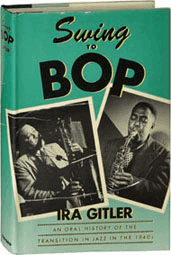
→
This indispensable book brings us face to face with some of the most memorable figures in jazz history and charts the rise and development of bop in the late 1930s and ’40s. Ira Gitler interviewed more than 50 leading jazz figures, over a 10-year period, to preserve for posterity their recollections of the transition in jazz from the big band era to the modern jazz period. The musicians interviewed, including both the acclaimed and the unrecorded, tell in their own words how this renegade music emerged, why it was a turning point in American jazz, and how it influenced their own lives and work. Placing jazz in historical context, Gitler demonstrates how the mood of the nation in its post-Depression years, racial attitudes of the time, and World War II combined to shape the jazz of today.
♦ →Dizzy Gillespie on the birth of bebop ↓
♦ History of the development of jazz starting not at the roots, but at 1940s bebop where jazz was at it’s «peak». Written and created entirely by Dillon Nicholson, narrated by Kelli Hearne ↓
¤ The Masters of Bebop – A listener’s Guide 
Click on book →
Back in the early 1940s, late at night in the clubs of Harlem, a handful of jazz musicians began to experiment with a style that no one had ever heard before. The music was fast, complicated, impossible to play for many of the older musicians – but it soon became the lingua franca of jazz music. They called it bebop, and as the years went by, it became even more popular. Today it reigns as perhaps the best-loved style of jazz ever created.
Ira Gitler conveys the excitement of this musical birth as only someone who was there can. InThe Masters of Bebop, Gitler traces the advent of what was a revolution in sound. He profiles the leading players – Charlie Parker, Dizzy Gillespie, Max Roach – but also studies the style and music of the first disciples, such as Dexter Gordon and J.J. Johnson, to reveal bebop’s pervasive influence throughout American culture. Revised with an updated discography – and with a new chapter covering bebop right up through the end of the twentieth century – The Masters of Bebop is the essential listener’s handbook.
<<<<<<< >>>>>>>
¤ Hard Bop and Mainstream Jazz in the 1950’s
* Other names used in this era were “Funky Jazz”, “Post-Bop” and “Soul Jazz”.
*Hard Bop is a term that appeared in the 1950’s to designate a style which had roots in BeBop and was somewhat different from Bop and Cool Jazz.
Hard Bop Differences from Be Bop:
1) Improvised lines were many times simpler than Bop lines.
2) Drummers tend to play with more activity.
3) Composers experiment more with the forms, breaking away from the 32 bar formula.
4) Pianists used more variety of chord voicings and comped even more rhythmically.
5) More complex harmony can be seen more frequently. by those who entertained themselves as “Post-Bop” performers. (Monk, Golson, Mingus, etc.)
6) Major scale modes were not the only modes used. More experimentation with both melodic and harmonic minor modes.
7) Many authors point to the fact that this era is dominated by Black Americans. (Which era hasn’t?) The music does reflect a mainstream approach to improvisation and composition. A lot of blues, gospel and rhythmic influences prevail.
8) Era dominated by improvisational practices and small groups.
9) Tunes characterized by “Soul Jazz” emphasize simple, tuneful themes and improvisations. They’re bluesy in nature and modeled black preachers in the sanctified churches. This music also emphasizes 6/8 or 3 meter, and more 16 bar phrases appear rather than standard 12 or 32 bar forms. Cadence points are often plagal (IV-I) rather than the standard V-I endings.
10) Players often associated with “Soul Jazz” include Cannonball Adderley, Gene Ammons, Shirley Scott and Bobby Timmons.
11) Hard-Bop groups included Horace Silver’s Quintet, Art Blakey’s Jazz Messengers, Clifford Brown and Max Roach’s Quintet.
¤ Some Important Stylists of the Hard-bop Period
· TRUMPET STYLISTS
• Clifford Brown [1930-1956]
 Began his career in Philadelphia, Pa.
Began his career in Philadelphia, Pa.
1) Possibly the most influential improviser on the trumpet in the late 1950’s.
2) Influenced players like Donald Byrd, Lee Morgan and Freddie Hubbard.
3) His protégé was Fats Navarro, whom he built a strong relationship.
4) Out of the bebop tradition, Brown was an extraordinary technician with exceptional virtuosity.
5) He was also a master of Ballad playing, as heard on “Clifford W/Strings” and one of the few musicians who seemed as comfortable with fast or slow.
6) Early in his career he toured with Tad Dameron (1952) and made his first recordings with Chris Powell and the Blue Flames. Later toured with Lionel Hampton (1953) and played in a trumpet section consisting of Quincy Jones, Art Farmer and Walter Williams.
7) In 1953 toured with the Art Blakey Quintet. The “Live at Birdland” recordings are some of the most exciting trumpet solo’s on record.
8) Of his many recordings , one of the most mature could be found in his partnership with Max Roach titled “Study in Brown”.
9) Currently there’s a book of his solo transcriptions of every improvisation he ever recorded.
• Kenny Dorham [1924-1972]
1) Known for his individual style to trumpet playing. Also played Saxes.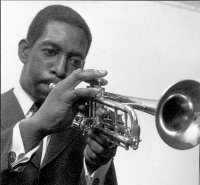
2) Started playing in the bands of Gillespie and Eckstine in 1945.
3) In 1948-49, played and toured with Charlie Parker’s Quintet.
4) He was a founding member of the Jazz Messengers with drummer Art Blakey in 1954. Led his own group called The Jazz Prophets, (“Dorham and the Jazz Prophets», 1956)
5) From 1956-58 played in the Max Roach Quintet, taking Clifford Brown’s spot.
6) Known for his work with Tenor-saxophonist Joe Henderson in the 1960’s.
7) Known for his fluidity, interesting use of intervallic play and virtuosity when improvising, also a fine composer.
· SAXOPHONISTS
• Cannonball Adderley [1928-1975]
* Alto Saxophonist, Bandleader, Composer.
1) One of the key musicians in this era that defined the term “Soul Jazz”.
2) Led one of the great Hard-Bop quintets with his brother Nat Adderley.
3) “Cannonball” was an evolved name which stemmed from childhood name “cannibal”, which was given to him based on his huge appetite.
4) Moved to NYC with hopes of working with his brother Nat and doing graduate studies in Education at NY University. (He was a public school teacher) Instead, he played in a Jam session with Oscar Pettiford’s Big Band and this led to an immediate recording contract opportunity.
5) After trying to get the Adderly Brothers Quintet off the ground unsuccessfully, Cannonball joined the Miles Davis Quintet in October 1957.
6) With Miles, Adderley records one of the most recognized Albums in Jazz History, «Kind of Blue».
7) Stayed with Miles until 1959, and reforms the Adderley Brothers Quintet. This is successful this time and lasts until 1975. This group became known for playing Jazz that was “funky” and “soulful” in nature.
8) Many great stars came from his Quintet, Joe Zawinul, Louis Hayes, George Duke, Victor Feldman, Roy McCurdy, Nat Adderley, Yusef Lateef and Charles Lloyd.
9) A master improviser, he was labeled unfairly as the “New Bird”. In fact much of his musical direction was much different than that of Parkers. Here are a few key differences:
a) His lines were more chromatic and linear than Parkers.
b) His sound was bigger and more biting than Birds.
c) Played more ‘gospel’ and ‘soulful’ styles. His music was somewhat simpler and reached a large R&B audience.
d) After his association with Miles, his spacing in solos was more prevalent and incorporated more aspects of “free” music in the 60’s.
10) Cannonball being an educator, did a lot lecturing on the college circuit speaking on the sociological and musical aspects of Jazz music in his career.
• Hank Mobley [1930-1986]
*Tenor Saxophonist, Bandleader, Composer
1) First big break was when he began playing with Max Roach in 1951-53 off and on.
2) In 1954 began working with Dizzy Gillepsie.
3) Helped to form the Jazz Messengers with Horace Silver and Art Blakey in 1954. Stayed with this group until 1956.
4) !956-57 led his own group.
5) From 1959 to 1961 he worked with Blakey (1959), Dizzy Reece (1960) and Miles (1961-62).
6) Freelanced and recorded a significant amount of work after this as a leader and sideman.
7) Many notables who worked with Mobley included: Lee Morgan, Philly Joe Jones, Wynton Kelly among others.
8) Trademark in his improvisations was his unique use of rhythm, relaxed tone and a sense of easy delivery.
· Small Group Leaders
• Horace Silver [1928-2014 ]
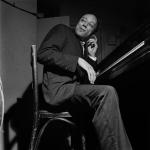 * Bandleader, pianist and composer
* Bandleader, pianist and composer
1) Led one of the great, classic Jazz quintets in the Hardbop era.
2) Many of the great improvisers played in his groups.
3) In 1950, Stan Getz made a guest appearance in Hartford,Ct. backed by Silver’s trio. Getz enjoyed the experience he employed Silver’s group for the next year touring.
4) In 1951, moved to NY where he played regularly with many of the greats in jazz, including, Coleman Hawkins, Lester Young, Oscar Pettiford and Art Blakey.
5) Forms a group with Blakey and co-leads from 1953-56.
6) By 1956, he was leading his own groups and employing some of the great improvisers in his time.
7) Silver’s quintet was influential on these counts:
a) Along with Miles Davis, helped to codify the Jazz quintet sound. (Tpt., Sax, R-section)
b) His group was a vehicle in bringing many his compositions to the forefront of Jazz. He, along with Monk, may have been the important composers of this era. (Monk made his comeback in 1957, and a rebirth of his compositions was a factor at this same time)
c) His groups along with Blakey and Miles, served as important training grounds for young improvisers.
d) Considered by many as one of the chief figures in creating the genre “Hard bop” for his use of Bluesy intonation, R&B, gospel and funky elements to his compositions. “Song for My Father”, was a tune of Silver’s that reached the national pop charts in popularity.
e) Many of his compositions have become “standards” in Jazz circles.
• Art Blakey [1919-1990] 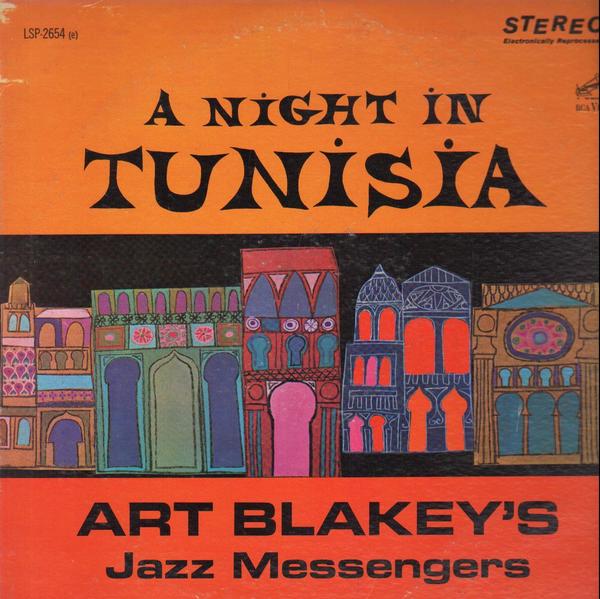
* Drummer, Bandleader [The Jazz Messengers]
1) A major figure in modern Jazz and a pioneer in modern drumming.
2) Some of his important characteristics:
a) Powerful Style
b) Element of surprise in his hits and kicks
c) Highly energetic throughout his career
d) Very responsive r-section contributor to the improvised solo
e) Strong hi-hat feel *(2 & 4) a trademark of Blakey’s.
f) Known for exuberant cross rhythms in ensembles and improvisations.
g) Played a trademark roll many time bringing solo’s energy to a new dynamic level!
3) His groups served as training grounds for some of Jazz finest soloists. some of these include, Sonny Rollins, Wayne Shorter, Jackie Mclean, Lee Morgan, Freddie Hubbard, Wynton Marsalis, Silver (co-led), Cedar Walton, Curtis Fuller and many others!!
4) Groups also sparked some great original compositions by his talented sidemen.
5) His early career included stints with Fletcher Henderson (1943-4), Billy Eckstine (1944-47) and then became associated with Jazz modern movement. People would compare his energetic style to former greats such as Chick Webb and Sid Callet. Blakey, however evolved to a more modern contrast to these earlier players and made his own mark in Jazz.
6) In 1955 he and Horace Silver formed a quintet with Kenny Dorham and Hank Mobley called the Messengers. Silver leave to direct his own groups in 1956 leaving Blakey with the Messengers one of the most influential quintets/sextets in Jazz history.
· HARD BOP PLAYERS OF THE 1960’s . . .
• Lee Morgan [1938-1972]
1) Like Brown, was also from Philadelphia.
2) At the age of 15 was touring with the Dizzy Gillespie band. (2 years-1956-58)
3) Joins Art Blakey in 1958 and stays with Blakey until 1961. Quits to freelance and rejoins Blakey in 1964-65, where he then quits to pursue his own band.
4) Plays in his own band until 1971, when he was shot to death by his mistress at Slugs, a nightclub in NYC.
5) Known for his expressive, bluesy approach to improvisation. Epitomizes “Soul Jazz” in late 50’s and the early 60’s. Developed a unique 1/2 valve expression and interesting approaches to phrasing in his improvisations.
6) Although many look to the influence of Clifford Brown (“The Freedom Rider”), by the time he releases “Totem Pole” in 1963, Morgan began to establish himself as one of the unique stylists of he era.
7) Possibly some of his best work may be found with Tenor Saxman Hank Mobley («What Now My Love», 1964 and “Dippin’” in 1965)
• Joe Henderson  [1937-2001]
[1937-2001]
1) One of the master improvisers from the late 1950’s and on. Known for his great control of the instrument, thematic development and virtuosic improvisations.
2) Grew up and thrived on a thriving local jazz scene in Detroit, Mi, where he heard the likes of Sonny Stitt, the Jones brothers and more. Studied at Wayne State University, where Curtis Fuller, Yusef Lateef and other prominent local Jazz men were his contemporaries.
3) Played as a sideman for many great leaders in Jazz, including, Sonny Stitt (1959), Brother Jack McDuff (1961-2), Horace Silver (1964-66) and later Herbie Hancock (1969- 70).
4) Later moved to San Francisco area, where he continued lead many of his own groups. Made important collaborations there with Freddie Hubbard, Hancock and others.
5) Was known as a master teacher and taught throughout his career.
6) An eclectic musician in his tastes, he has been quoted as being influenced my modern 20th century composers as well as the great bebop artists.
[http://www.oswego.edu]
• Freddie Hubbard [1938-2008]
Hubbard was born on April 7, 1938, In Indianapolis, Indiana. As a student and band member at Arsenal Technical High School, he demonstrated early talents on the tuba, French horn, and mellophone before eventually settling on the trumpet and flugelhorn. He was first introduced to jazz by his brother, Earmon, Jr., a piano player and a devotee of Bud Powell […]
In 1958, Hubbard moved to New York at age 20 and quickly established himself as one of the bright young trumpeters on the scene, astonishing critics and fans alike with the depth and maturity of his playing. Within the first two years of his arrival in the Big Apple, he landed gigs with veteran jazz artists Philly Joe Jones, Sonny Rollins, Slide Hampton and Eric Dolphy. He joined Quincy Jones in a tour of Europe that stretched from 1960 to 1961.
Per a recommendation from Miles Davis, Hubbard was signed to Blue Note, where he recorded «Open Sesame», his solo debut, in 1960 at the age of 22. The album, which also featured Tina Brooks and McCoy Tyner, marked the launch of one of the most meteoric careers in jazz. Within a year’s time, Hubbard followed up with his second and third recordings – «Goin’ Up» (1960), with Tyner and Hank Mobley, and «Hub Cap» (1961), with Julian Priester and Jimmy Heath.
In 1961, Hubbard released what many consider to be his masterpiece, «Ready For Freddie», which marked his first Blue Note collaboration with Wayne Shorter. Later that same year, he joined Art Blakey’s Jazz Messengers. In the span of a few short years, this hard-blowing young lion had quickly established himself as an important new voice in jazz.
Hubbard left the Jazz Messengers in 1964 to form his own small group, whose ranks included Kenny Barron and Louis Hayes. Throughout the remainder of the decade, he also played in bands led by a variety of other high-profile jazz artists […] He achieved his greatest popular success in the 1970s with a series of crossover albums on Atlantic and CTI Records […] Later in the decade, he returned to the acoustic, hard-bop idiom with the V.S.O.P. quintet, which teamed him with members of the 1960s Miles Davis Quintet.
As the ‘80s got under way, Hubbard was once again leading his own group, playing at concerts and festivals in the U.S. and Europe. He frequently collaborated with Joe Henderson, playing a repertory of hard-bop and modal-jazz pieces. Other associations throughout the decade included Monterey Jazz Festival dates with Bobby Hutcherson; studio projects with Woody Shaw and Benny Golson; and a live recording in Holland (Feel the Wind) with Blakey in 1988 […]
Some pursuits in the early ‘90s included the formation of a new band of emerging young artists: Christian McBride, Javon Jackson, Carl Allen and Benny Green. He continued to seek out fresh young talent as the decade unfolded by collaborating with the New Jazz Composers Octet. Hubbard performed and recorded with the Octet – a collective led by fellow trumpeter David Weiss – for the last decade of his career, culminating with his final recording, «On The Real Side», released in 2008.
Despite failing health as the new century got under way, Hubbard continued to carry the jazz torch by participating in clinics and residencies at various colleges around the country to share the wealth of his knowledge with up-and-coming artists. In 2006, the National Endowment for the Arts granted Hubbard its highest honor in jazz, the NEA Jazz Masters Award.
He suffered a heart attack in late November 2008 in Sherman Oaks, California, and died a few weeks later, on December 29, at the age of 70.
•→ Jackie McLean + Woody Shaw + McCoy Tyner + Cecil McBee + Jack Dejohnette
←Phil Woods Quintet
•→ Donald Byrd Quintet [Cannes 1958]
• ‘In a mellow tone’ (1985) … [01] ⇔ [02]
¤ Sonny Stitt ⇓ [1924-1982]
Sonny Stitt on alto, Walter Bishop, Jr. on piano, Tommy Potter on bass & Kenny Clarke on drums
∗→ ‘Lover Man’ ⇐
∇ ‘Blues Walk’ ⇓ [1958]
Dizzy Gillespie, trumpet; Sonny Stitt, tenor saxophone; Lou Levy, piano; Ray Brown, bass; Gus Johnson, drums
¤ Dexter Gordon ⇓ [1923-1990]
≈ . . . (Belgium, 1964) … (1) ‘Lady Bird’⇐ / (2)→ ‘Body & Soul’ ⇑
•→ ‘I Want More’ ⇐ [Norway_1964]
∇ ‘You’ve Changed’ ⇓ (Switzerland, 1963)
Dexter Gordon: tenor sax + Kenny Drew : piano + Gilbert Bibi Rovère: bass + Art Taylor: drums
¤ Bobby Watson ⇓
¤ Jon Faddis ⇓
♦ Here’s That Rainy Day ↓ [2005]
•→ I Can’t Get Started ⇐[2013]

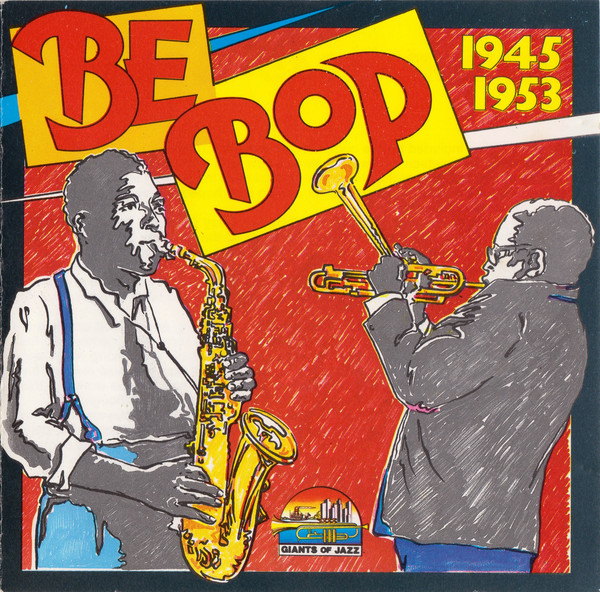



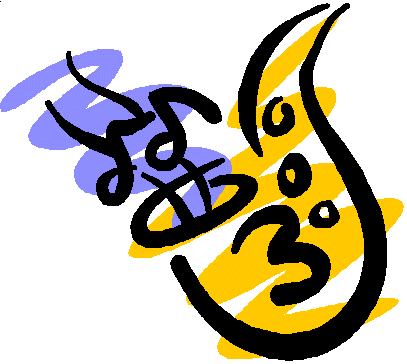

Deja un comentario